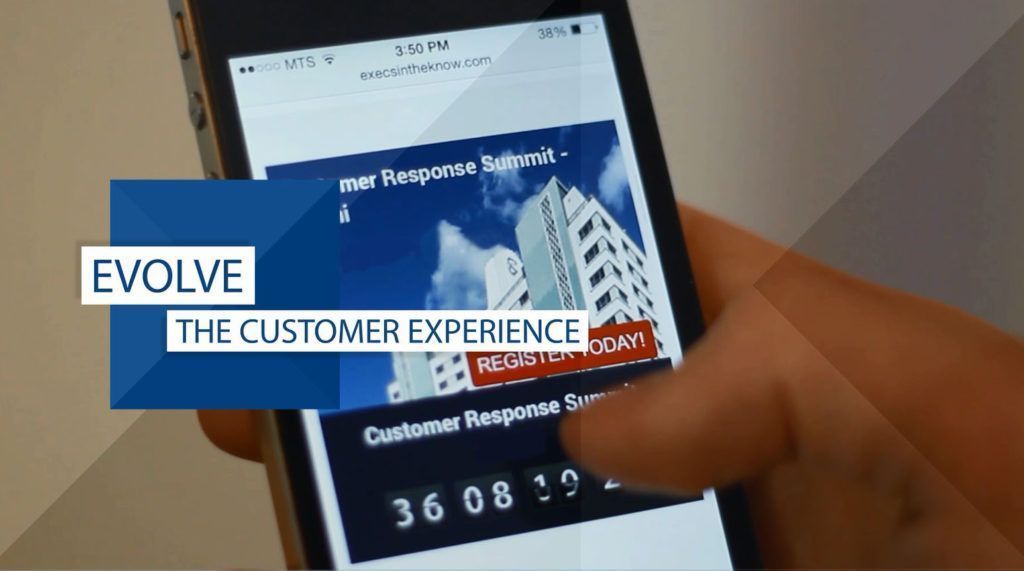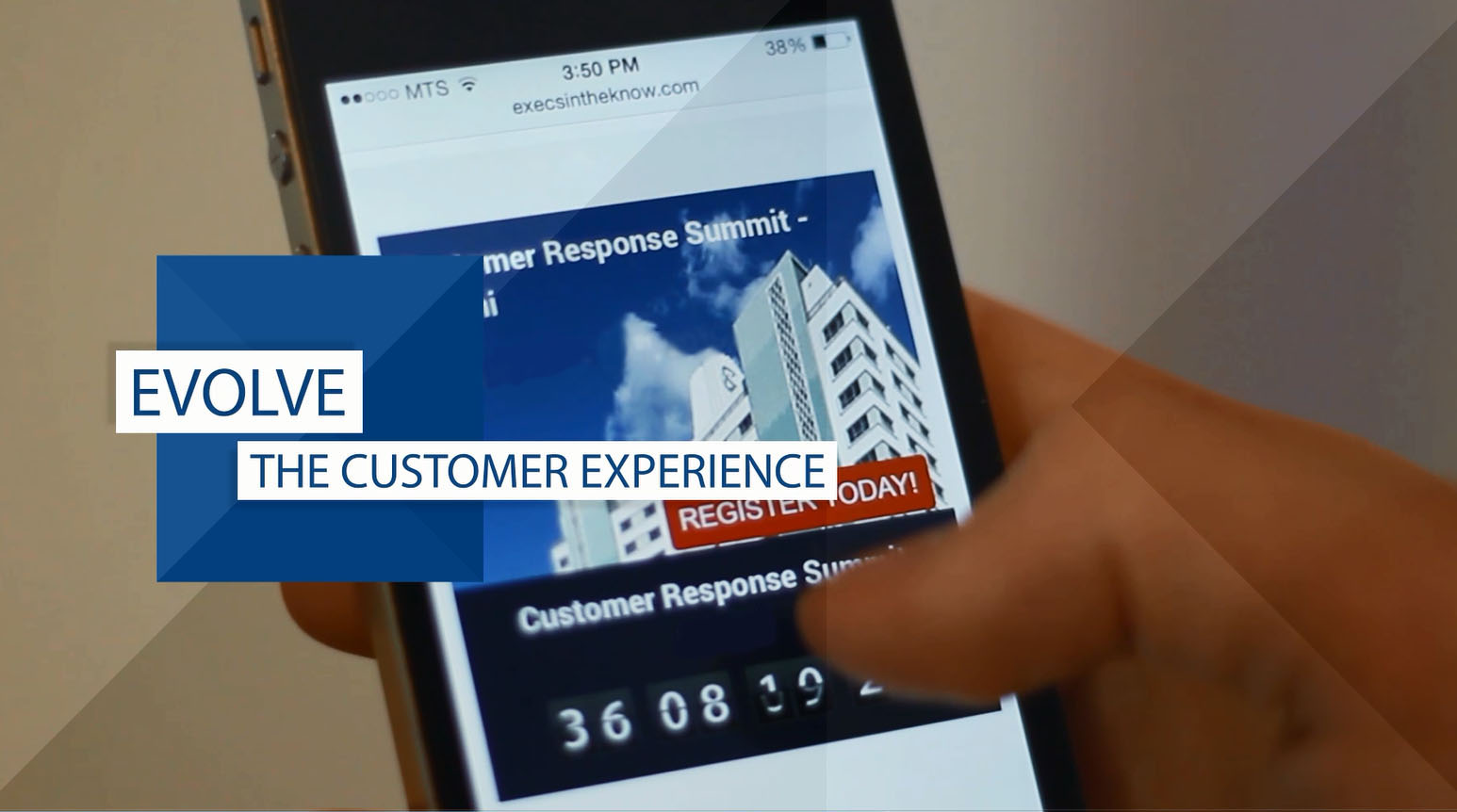
This is a guest blog written by Dan Gordon, SVP Strategy & Development, West Interactive Services. Learn more about West on their website. To hear more about this topic and others like it, join us at Customer Response Summit Seattle, September 28-30th.
Picture this: You’re a frequent flyer, going from city to city every week, and spending hours in airports. You have your routine down to the letter and any substantial hitch has a domino effect on your schedule – not to mention work/life balance.
You roll with inevitable delays and gate changes better than most, but you have to be in-the-know. You don’t demand flawlessness, but you do expect communication at a rate that keeps up with the countless voice messages from your colleagues, emails from your boss, texts from your spouse, in-app bill-pay alerts, etc., that are hopefully punctuated by a few moments to catch your breath.
So, you opt-in to SMS/text alerts from your airline. When you land, your phone dings with a notification that your connecting flight is delayed due to plane maintenance. “Ok. Is there a gate change?” you naturally reply, knowing that it takes 20 minutes to trek from point A to point B.
The response: Radio silence or, perhaps worse, a plain old “Thank you for flying with us.” (Why? Because that alert was sent by a machine and there’s nobody manning it on the other end.)
There’s an estimated 30-minute hold-time when you click-to-call, so you ask a rep at a nearby kiosk who, unfortunately, hasn’t yet gotten the memo that there’s a delay in the first place, much less its implications. Meanwhile, dozens of other confused passengers are duplicating efforts – spending far more of the airline’s time and money – when a simple “There is no gate change at this time,” SMS response could have taken care of it.
***
Pew Research tells us that 9 in 10 Americans own a mobile device and roughly 65% of them own a smartphone, proving that this scenario is a very real one – and this customer service challenge, a pleasantly solvable one.
***
One-to-one agent-based support is expensive, which explains why many organizations adopt proactive communication strategies to preempt some of customers’ inbound service needs. SMS/text messaging engages customers on devices they’re already using and just so happens to provide a more bang-for-your-buck than other channels.
However, SMS isn’t so simple that you’re off the hook for two-way support; just as they would when having a text conversation with a friend, customers expect to be able to respond to SMS notifications and assume your brand will heed their replies. (It’s completely rational.) The big hitch is that not every reply is predictable and not every interaction can be automated. (They’re only human.)
Fortunately, solutions are out there. Agent-assisted SMS can do much of the heavy lifting for you – managing conversations, automating texts when possible, routing queries appropriately, and enabling agents to multi-task.
Customers fully benefit from the convenience of your SMS support offer, your contact center agents more confidently manage customer service, and costs stay impeccably low. That’s textbook “win, win, win.”
Advanced SMS solutions can interpret free-form, natural language texts and automate replies; others can route requests to an agent and provide as much freedom or selection of “canned” responses as is appropriate. Any agent on the receiving end of an escalated customer message can see the entire conversation (including an initial alert that may have prompted it) and duly engage with countless users at one time.
Unlike phone conversations, which demand undivided attention and plea for in-call resolution, SMS dialogues could take place over two minutes, 12 hours or even days, depending on the nature and urgency of the matter. Nonetheless, every interaction is recorded, every conversation is regulation-compliant, any transferred agent maintains visibility, no conversation requires exclusivity, and every customer feels nurtured.
Think back to that your same travel experience above. An offer to request SMS “HELP” with the initial notification of a flight delay could have saved multiple customer service representatives’ valuable time – not to mention your frustration. Multiply that times the hundred-some fellow passengers on your flight, times however many flights a day, in however many airports around the world, and you’re talking serious savings and skyrocketing customer satisfaction rates.
Now imagine the implications in your industry, on your contact center: Banking, insurance, utility, healthcare, pharmacy, telecom, retail, home services… You name it.
If that’s not a reason to feel great about hopping on a plane to Seattle, to join Execs In The Know at Customer Response Summit, I don’t know what is.
West will share more about how this concept works at the Idea Lab during Customer Response Summit Seattle, September 28-30, 2015. Join us!



























































 TELUS Digital
TELUS Digital ibex delivers innovative BPO, smart digital marketing, online acquisition technology, and end-to-end customer engagement solutions to help companies acquire, engage and retain customers. ibex leverages its diverse global team and industry-leading technology, including its AI-powered ibex Wave iX solutions suite, to drive superior CX for top brands across retail, e-commerce, healthcare, fintech, utilities and logistics.
ibex delivers innovative BPO, smart digital marketing, online acquisition technology, and end-to-end customer engagement solutions to help companies acquire, engage and retain customers. ibex leverages its diverse global team and industry-leading technology, including its AI-powered ibex Wave iX solutions suite, to drive superior CX for top brands across retail, e-commerce, healthcare, fintech, utilities and logistics.






















 Trista Miller
Trista Miller




























